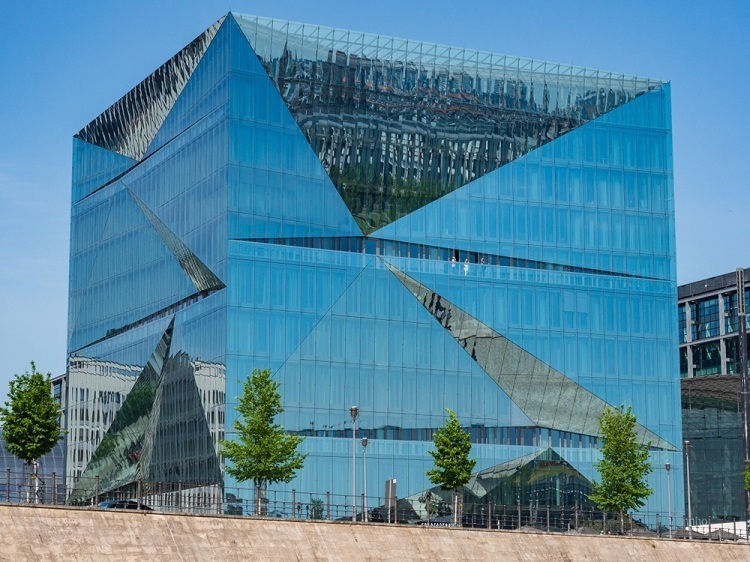The world is changing at a rapid pace and as a result, so are the threats. With more people living in cities than ever before, natural disasters have become more frequent and more devastating. In order to protect the public and keep them safe, smart buildings are being developed that can react quickly in order to mitigate any risks and reduce any damage. Smart buildings use digital technologies in combination with other advanced features to make the building smarter, safer, greener, higher performing and easier to maintain. These features range from security systems to energy-efficient technologies – which not only protect you from hazards but also reduce costs by making your building more sustainable. We’ve rounded up some of the smartest buildings in the world that are using these cutting-edge technologies so check them out!
Table of Contents
Smarter Security Systems
The security systems of smart buildings have been designed to be more intelligent than ever before. This allows these systems to interact with other devices, like sensors and AI algorithms, in order to predict and manage risks more effectively. The security systems of smart buildings are also more interconnected than ever before. This allows smart buildings to share information between different parts of the building (stairwells, parking garages, etc.) or even between different buildings. The growing adoption of AI in security systems allows for the collection and analysis of data in order to make predictions about threats and respond accordingly. These predictive capabilities can create a safer environment for you and your guests by managing the flow of people and assets through the building. This can also reduce the number of staff that are required to operate the building, leading to economic benefits. The use of smart security systems is also expected to increase as the public becomes more aware of the benefits of digital technologies.
Energy-Efficient Technology
Energy-efficient technology has gone from being something that would help keep your building more sustainable to be a basic feature of most smart buildings. New buildings are being designed with energy-efficient systems in mind while existing buildings can undergo a retrofit that will make them more energy-efficient. This is becoming advantageous due to the emphasis that cities are putting on sustainability. For example, new construction must adhere to strict energy efficiency standards to meet community standards, while existing buildings are being encouraged to be more sustainable by retrofitting existing systems. In both cases, the goal is to make buildings more sustainable, which means that they require less energy to function. A key component to achieving this is making sure that your building is properly insulated. Insulation prevents thermal bridging, which happens when heat from one part of the building travels to another part of the building and causes a rise in temperature. Insulated More
Smarter Windows
The windows in your building are the most important parts of the security system. You can’t protect against one hazard without the other. With that in mind, smart buildings are being designed with smarter windows. Windows that are more energy-efficient can reduce your electricity use, while smart windows can be automated and controlled using a variety of sensors and AI algorithms. These windows can be connected to other building components and can be integrated with security systems to create more comprehensive control and security systems. This allows you to create a safer, more secure environment for your guests.
Intelligent Lighting
The lights in your building can make a big difference when it comes to sustainability. For example, LED lights are much more energy-efficient than traditional bulbs. This means that you can use less energy while still achieving a desired level of illumination. This makes your building more sustainable and more cost-effective. The lights in your building can also come with smart features, like controllable lighting modes. This allows you to create specific moods and atmospheres in your building without using an excessive amount of electricity. These lights can be integrated with other building components, such as security systems and thermostats, to create an even more efficient and sustainable building.
Collect and Dispose of Waste Properly
One of the biggest challenges for smart buildings is creating a single system that can handle everything. For example, garbage collection, cleaning, and disposal need to be seamlessly integrated with the water system. The same goes for recycling and organics. This is especially challenging in smaller cities that have a limited number of different waste collection companies that handle different kinds of waste. The building needs to be designed in such a way that it can handle all of these challenges while still providing a comfortable home. The best option is to build your building with smart features that can handle most of these challenges.
Conclusion
The future of smart buildings is bright. This is especially true if you’re considering building a new facility. It’s important to remember that new buildings are more likely to incorporate these digital technologies and are therefore more likely to be sustainable. The best way to ensure that you’re building with sustainability in mind is to include an assessment of your building. This can help you to identify any issues that could be preventing your building from being more sustainable.

